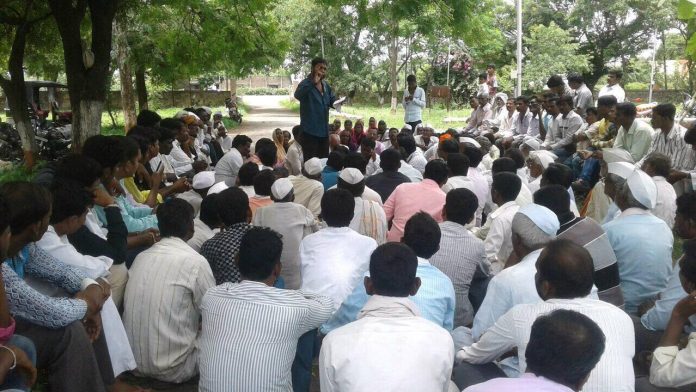By Yogesh Maitreya, TwoCircles.net
The question of land ownership for people who work and toil on it has been asked for over 50 years now in Maharashtra, but it is clear that despite many protests and struggles, the government is yet to act on this issue.
According to the 2001 census, 61.39% Dalits (Scheduled Castes) are forced to take up agricultural work in which they remain underpaid and are often subjected to humiliation. In fact, it would not be wrong to suggest that the reason for their plight in rural Maharashtra is their landlessness.

Raju Adagale, Assistant Professor with BARTI (Babasaheb Ambedkar Research and Training Institute) Pune explains the issue in detail. “Grazing land is one of the categories included in wastelands. This land, if allocated equitably among the marginalised, can contribute significantly to their livelihood security. Of course, the significance of Dalit access to common lands goes beyond livelihood; it is an instrument for the assertion of their rights and dignity,” he says.
However, Dalits assertion for their rights and dignity has not always been straightforward and/or smooth.
It is important to remember that Dadasaheb Gaikwad, a close associate of Babasaheb Ambedkar, had been a pioneer for the movement of land for Dalits. This struggle was started as early as 1959 and, in the convention which took place on May 14 and 15, 1959 organised by Dadasaheb Gaikwad led RPI (Republication Party of India), a resolution was passed, saying: “The ownership of all lands should be possessed by the government and let those toil it who want to toil it. After deducting all the expenditures, the profit should be divided equally.”
But little seems to have changed in the present age. To understand the gravity of grazing land issue and how it is related to the phenomena of atrocity especially in rural Maharashtra, TwoCircles.net spoke with Kadudas Kamble, Maharashtra Region President of National Confederation of Dalit Adivasi Organisation (NADAO). Kamble said, “Since many Buddhists have had social and political movements, they have managed to acquire Gairan land on their names. But similar movements did not emerge in the case of other castes like Matangs (also called as Mang) and so they were unable to acquire these lands despite government provisions.” Ironically, Dalit movement in Maharashtra fought for all Dalits; all castes within SC category to acquire land, but only a few of them have managed to acquire land due to the divisive nature of the structure of caste and rigid attitude that hinders the solidarity among all castes within the category of Scheduled Caste.
On the other hand, according to Kamble, “Maharashtra government has allocated these Gairan lands to cotton spinning factories, sugar factories as well as the forest department whereas as per the rule, all encroachment on Gairan lands by Dalits before the 1990s should be legalised and given to them but this isn’t happening. The issue is more complex. Buddhists and Matangs those who have managed to acquire land have faced discrimination and violence. Once they got land, Maratha and Dhangar communities found it difficult to get Dalits to work for them hence Marathas and Dhangars more often trouble the Buddhist and Matang community in villages. Acquisition of land between Buddhist and Matangs is also not equal. Many Buddhists have managed to get land which is not the case with Matang community in rural Maharashtra.”
Despite the complexity regarding the acquisition of Gairan land by all castes among Dalits, Kamble through his organisation is creating awareness about how to acquire these lands and fighting for the rights of Dalits. In Beed, one of the atrocity-prone districts in Maharashtra, Kamble’s organisation and Gairan Hakka Sanghrash Samiti, Gevrai (Gairan Right Struggle Committee) are planning to lead a huge protest in the coming days to the local Tehsil Office. While it is expected that such protests will increase awareness, the truth is that Dalits have been denied what is rightfully theirs for decades.


